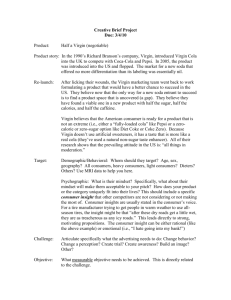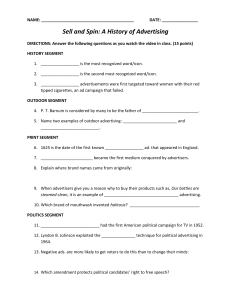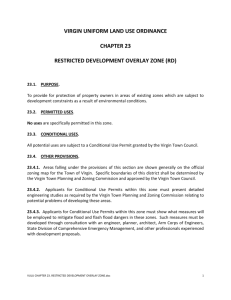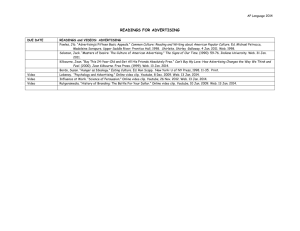click here - Adlaw International
advertisement
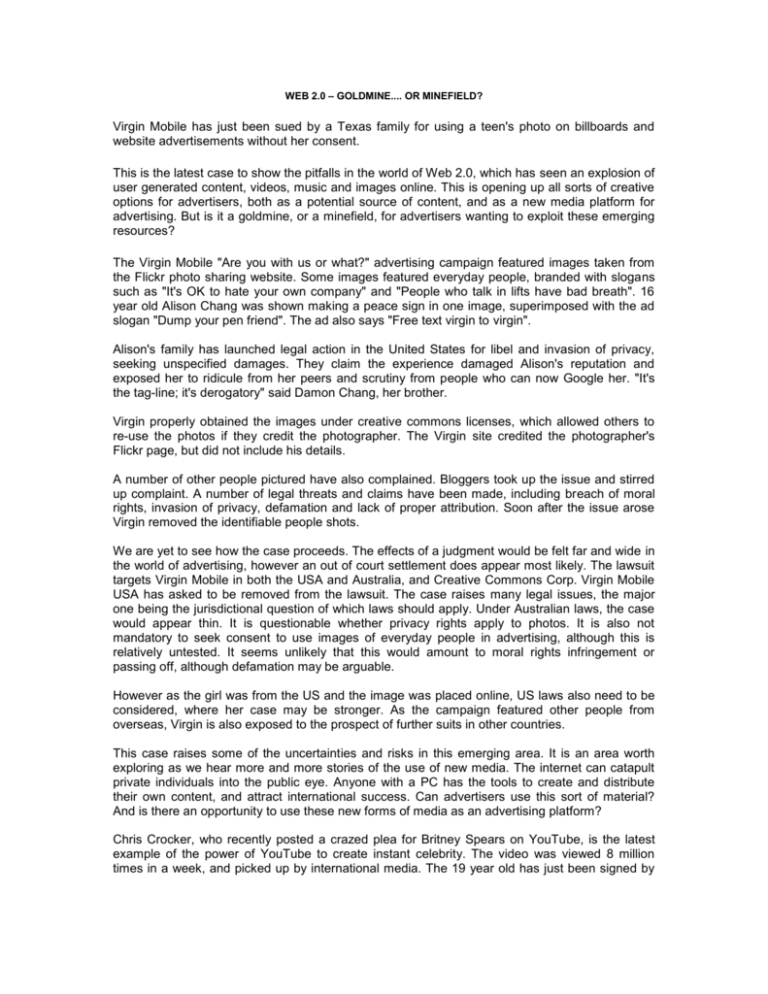
WEB 2.0 – GOLDMINE.... OR MINEFIELD? Virgin Mobile has just been sued by a Texas family for using a teen's photo on billboards and website advertisements without her consent. This is the latest case to show the pitfalls in the world of Web 2.0, which has seen an explosion of user generated content, videos, music and images online. This is opening up all sorts of creative options for advertisers, both as a potential source of content, and as a new media platform for advertising. But is it a goldmine, or a minefield, for advertisers wanting to exploit these emerging resources? The Virgin Mobile "Are you with us or what?" advertising campaign featured images taken from the Flickr photo sharing website. Some images featured everyday people, branded with slogans such as "It's OK to hate your own company" and "People who talk in lifts have bad breath". 16 year old Alison Chang was shown making a peace sign in one image, superimposed with the ad slogan "Dump your pen friend". The ad also says "Free text virgin to virgin". Alison's family has launched legal action in the United States for libel and invasion of privacy, seeking unspecified damages. They claim the experience damaged Alison's reputation and exposed her to ridicule from her peers and scrutiny from people who can now Google her. "It's the tag-line; it's derogatory" said Damon Chang, her brother. Virgin properly obtained the images under creative commons licenses, which allowed others to re-use the photos if they credit the photographer. The Virgin site credited the photographer's Flickr page, but did not include his details. A number of other people pictured have also complained. Bloggers took up the issue and stirred up complaint. A number of legal threats and claims have been made, including breach of moral rights, invasion of privacy, defamation and lack of proper attribution. Soon after the issue arose Virgin removed the identifiable people shots. We are yet to see how the case proceeds. The effects of a judgment would be felt far and wide in the world of advertising, however an out of court settlement does appear most likely. The lawsuit targets Virgin Mobile in both the USA and Australia, and Creative Commons Corp. Virgin Mobile USA has asked to be removed from the lawsuit. The case raises many legal issues, the major one being the jurisdictional question of which laws should apply. Under Australian laws, the case would appear thin. It is questionable whether privacy rights apply to photos. It is also not mandatory to seek consent to use images of everyday people in advertising, although this is relatively untested. It seems unlikely that this would amount to moral rights infringement or passing off, although defamation may be arguable. However as the girl was from the US and the image was placed online, US laws also need to be considered, where her case may be stronger. As the campaign featured other people from overseas, Virgin is also exposed to the prospect of further suits in other countries. This case raises some of the uncertainties and risks in this emerging area. It is an area worth exploring as we hear more and more stories of the use of new media. The internet can catapult private individuals into the public eye. Anyone with a PC has the tools to create and distribute their own content, and attract international success. Can advertisers use this sort of material? And is there an opportunity to use these new forms of media as an advertising platform? Chris Crocker, who recently posted a crazed plea for Britney Spears on YouTube, is the latest example of the power of YouTube to create instant celebrity. The video was viewed 8 million times in a week, and picked up by international media. The 19 year old has just been signed by TV producer 44 Blue Productions to create his own reality TV show, which will follow Crocker's life in Tennessee, where he lives with his grandparents. The "I Got a Crush on Obama" video placed on YouTube this year was viewed more than a million times within a week of posting and received international publicity. It boosted the celebrity of 21 year old journalism student Leah Kauffman and 32 year old ad executive, who made the video for under $2,000. They secured a string of interviews, featured on over 150 television stations and have since launched the political commentary site "Barely Political" which now features new videos, merchandise and songs including "I Like a Boy", dedicated to US troops. Miss South Carolina Teen USA, who gave a rambling commentary on why one fifth of Americans can't find the US on a map, received over 15 million views on YouTube, although the commercial offers haven't rolled in just yet. All this free and en masse distribution online may suggest rich pickings for advertising. This may be true but it is still a minefield, as the online environment is difficult to regulate and remains a bit of a wild west. Materials can be bounced all over the internet, but this doesn't automatically place them in the public domain. Copyright laws still apply and the world of social media presents new difficulties with this. A copyright clearance may not be worth the paper it's written on if it's not from the right person. You may not be 100% sure the person who posted material online, owned copyright in the first place. The rightful owner may not bother to prevent people sending it around privately, but could crack down on commercial use. As shown in the Virgin case, you will also need to check out the rights of the individuals involved. You will also need to navigate the terms of use of the site involved, some sites such as YouTube, prohibit using content for commercial purposes. Can advertisers upload material on these social media sites? There are success stories of advertisers or businesses driving campaigns that end up with loads of exposure online. Most of your general legal considerations still apply, including misleading conduct, defamation and copyright laws. Arguably some of the advertising self regulatory codes may not apply in Australia, although there have been noises about updating the codes to bring them in line with new media. You may also need to check the site terms of use regarding uploading content for commercial purposes. Opportunities are opening up to exploit these new media platforms. The online space is unfortunately littered with legal landmines. As the more adventurous advertisers start to push the boundaries, the paths will become more mapped out. One thing is clear, as consumers have gained greater control and ownership of their content, they will come to expect this from their advertising. By Heidi Bruce Anisimoff Legal heidi.bruce@anisimoff.com.au
